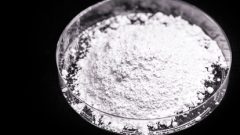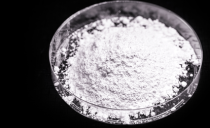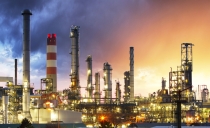
Aluminum Oxide: What it is & Where it’s Used
Aluminum oxide (Alumina) is the most frequently used oxide ceramic material and its applications are extremely broad. Saint-Gobain Performance Ceramics & Refractories utilizes specialty raw materials of the highest purity and density. Bricks made from these materials have extremely low deformation under load. The high purity level of the grain ensures minimal chemical reactions (it is typically the impurities in the grains that will react with furnace contaminants and reduce service temperature of the end product). Saint Gobain is capable of designing and manufacturing a wide variety of shape geometries needed to construct the critical hot face lining of a reactor. Our shapes are made to high dimensional tolerances and exhibit consistent materials properties.
Key Properties of Aluminum Oxide
Aluminum oxide refractories are an extremely robust material, with high hardness, strong resistance to abrasion and high compression strength. It is highly resistant to thermal shock and chemical attack even at raised temperatures. These properties are why aluminum oxide stands out as the material of choice for low-cost production and manufacturing.
The Production of Aluminum Oxide
The Bayer process, followed by calcination, is a well-established workflow for producing aluminum oxide from bauxite. This works by first digesting Bauxite ore, containing a maximum of 55% alumina, in a hot sodium hydroxide solution. At temperatures of around 175°C, the aluminum dissolves and forms sodium aluminate. High-purity alumina is filtered from the compound, and the resulting solution is transitioned to a precipitator tank for cooling. As it cools, the solution becomes seeded with extremely fine-grained aluminum hydroxide (Al(OH)3) crystals. These crystals are moved to a kiln for calcination at temperatures approaching 1,260°C, yielding aluminum oxide powder.
The Applications of Aluminum Oxide
High aluminum oxide refractories are a mainstay in petrochemical applications, particularly syngas reactors which have demanding thermochemical and thermomechanical process conditions. Hydrogen is present in syngas applications. To achieve the best performance and avoid unwanted reduction reactions, high purity alumina is required. Another critical application of Al2O3 ceramics is in autothermal reforming (ATR), a key process used to produce synthesis gas through partial oxidation of hydrocarbons followed by catalytic reformation. The outstanding chemical inertness of pure alumina makes it ideal for application in both oxidizing and reducing atmospheres, making it a key contender material for multiple touchpoints in industrial petrochemistry.
Aluminum Oxide from Saint-Gobain
Saint-Gobain Performance Ceramics & Refractories has a deep understanding of the chemical behaviors of technical ceramics and manufactures a wide-range of aluminum oxide products to meet specific requirements of distinct customers. If you would like to find out more about our aluminum oxide products, contact us today for more information.
Related Content
Alumina (Al2O3)
Suppliers of aluminum oxide (alumina) ceramics which is the most popular fine ceramic.
Petrochemistry, Syngas and Hydrogen
Saint-Gobain Performance Ceramics & Refractories offers unparalleled refractory lining design, engineering, products and services to the global...
Hydrogen Syngas
Discover Saint-Gobain Performance Ceramics & Refractories’ range of materials for syngas applications that contain high hydrogen content.

